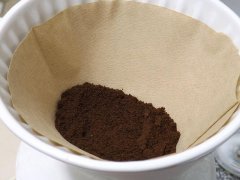Pour a cappuccino for aunt. Cappuccino.

Professional coffee knowledge exchange more coffee bean information please follow the coffee workshop (Wechat official account cafe_style)
Maybe you didn't drink a cappuccino at all? Do you really understand the meaning of cappuccino?
Pouring a cappuccino for my aunt is a particularly fun thing these days, which may be familiar to many people who watch live broadcasts or play games with landlords. It was mainly because of an anchor that made this sentence completely popular.
What does it mean to pour auntie a cappuccino?
The cause was that the anchorman fought the landlord when he was queuing up at RANK, took a better hand, and kept calling the girl he worked with called Auntie, and it was a bomb when there were four cards left, so during the live broadcast, he desperately signaled his partner to blow it up, and he said that he would have a cappuccino for his aunt, but the most unexpected result appeared. no, no, no. That is, the happy fighting landlord can pour coffee to his deskmate, and there is still a bomb left in his hand. Happy fight landlord coffee means to use a bomb, 50-50 coffee for teammates, teammates fried, landlords a big fry and 17 cards, 50-50 said it is impossible to finish 17 at a time, otherwise swallow the monitor and the landlord plane is gone.
Cappuccino, which means Italian foam coffee, is also translated as "doubly strong". In the early 20th century, Cappuccino was a change in Italian coffee, in which espresso was poured with steamed milk, and the color of the coffee was like that of a St. Franciscan monk covering a dark brown coat, hence the name caffeine.
The History of the changes of "Cappuccino" characters
The monks in the St. Franciscan Church (Capuchin), founded after 1525, were dressed in brown robes and pointed hats. When the St. Franciscan Church first spread to Italy, the locals thought the monks' clothes were special, so they gave them the name Cappuccino. The Italian word refers to the loose robes and pointed hats worn by monks, derived from the Italian "Cappuccio".
Because the Italians love coffee, when they find that espresso, milk and milk foam are mixed together, the color looks like the dark brown robe worn by monks, so they have an idea to give milk with coffee and sharp milk foam drink, named "Cappuccino". The word was first used in English in 1948, when a report in San Francisco first introduced Cappuccino beverages. It was not until 1990 that it became a familiar coffee drink.
Culture of "Cappuccino"
It is gradually endowed with romantic meaning because of its mellow appearance, gentle taste and moderate aroma. In fact, Cappuccino is a kind of mediocre coffee. Because it uses 33 coffee blending technology. There are a lot of people like Cappuccino, to be exact, it is the complex flavor that comes from the combination of 1max 3 espresso coffee, 1max 3 milk and 1max 3 foam, which is fragrant but not bitter and easy to accept.
Cappuccino became popular in the United States in the 1990s with the increase of high-end cafes. In Italy, Cappuccino is part of breakfast. Italians drink Cappuccino and enjoy Croissant Croissant (known as Cornetto in Italy) for breakfast, but after breakfast time, Italians no longer drink Cappuccino. In other countries, especially the United States, Cappuccino is not limited to breakfast time. Cappuccino sold in American convenience stores is not the same thing as Italian Cappuccino, because American convenience stores usually use machines to make Cappuccino, which is made by adding powdered drinks and hot water to high-speed machines, which is different from the original Cappuccino practice.
.
Important Notice :
前街咖啡 FrontStreet Coffee has moved to new addredd:
FrontStreet Coffee Address: 315,Donghua East Road,GuangZhou
Tel:020 38364473
- Prev

How do you order espresso? how should I drink espresso?
Professional Coffee knowledge Exchange more information on coffee beans Please follow the coffee workshop (Wechat official account cafe_style) espresso standard practice what is authentic espresso espresso was originated in Italy with a highly concentrated, bittersweet coffee name in the early twentieth century. Translated from Italian, the word espresso refers to speed and single service.
- Next

What's the difference between coffee powder and instant coffee? is instant pure coffee a boutique coffee?
Professional coffee knowledge exchange more coffee bean information please pay attention to the coffee workshop (Wechat official account cafe_style) how the size of coffee powder affects the taste-common ground coffee is mainly made of coffee beans, there are two main kinds of coffee beans, one is Arabica, the other is Robusta, Arabik is like Penglai rice, and Robusta is like
Related
- Beginners will see the "Coffee pull flower" guide!
- What is the difference between ice blog purified milk and ordinary milk coffee?
- Why is the Philippines the largest producer of crops in Liberia?
- For coffee extraction, should the fine powder be retained?
- How does extracted espresso fill pressed powder? How much strength does it take to press the powder?
- How to make jasmine cold extract coffee? Is the jasmine + latte good?
- Will this little toy really make the coffee taste better? How does Lily Drip affect coffee extraction?
- Will the action of slapping the filter cup also affect coffee extraction?
- What's the difference between powder-to-water ratio and powder-to-liquid ratio?
- What is the Ethiopian local species? What does it have to do with Heirloom native species?

